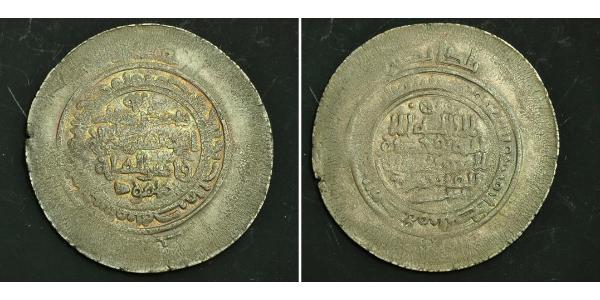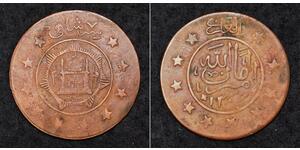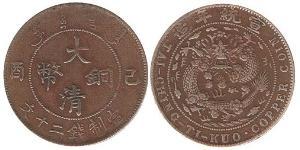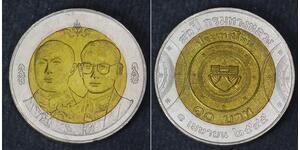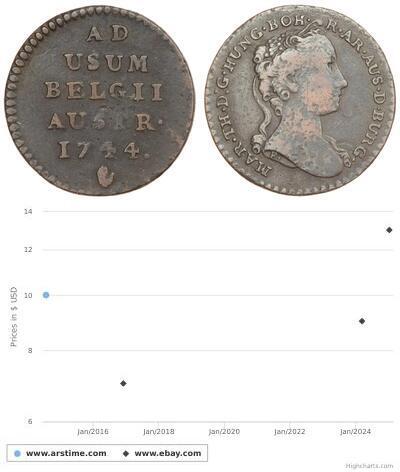(sold for $70.0)
997, Ghaznavid Empire, Mahmud of Ghazni. Silver Multiple Dirham Coin. 12.5gm!
Mint Year: AH 389?
Denomination: Multiple Dirham
Reference: Album 1608, Mitch-AN16.
Condition: Weakly struck (as usual), otherwise a nice VF-XF!
Diameter: 46mm
Material: Silver
Weight: 12.5gm
The Ghaznavid dynasty (Persian: غزنویان) was a Persianate Muslim dynasty of Turkic mamluk origin at their greatest extent ruling large parts of Iran, much of Transoxiana, and North India from 977-1186. The dynasty was founded by Sabuktigin, upon his succession to rule of Ghazna after the death of his father-in-law, Alp Tigin, who was a breakaway ex-general of the Samanid Empire from Balkh, north of the Hindu Kush in Greater Khorasan. Although the dynasty was of Central Asian Turkic origin, it was thoroughly Persianized in terms of language, culture, literature, and habits, and hence is regarded by some as a "Persian dynasty" rather than Turkic. Sabuktigin's son, Mahmud of Ghazni, declared independence from the Samanid Empire and expanded the Ghaznavid Empire to the Amu Darya, the Indus River and the Indian Ocean in the East, and to Rey and Hamadan in the west. Under the reign of Mas'ud I, the Ghaznavid dynasty began losing control over its western territories to the Seljuq dynasty after the Battle of Dandanaqan, resulting in a restriction of its holdings to modern-day Afghanistan, Punjab, Pakistan, and Balochistan. In 1151, Sultan Bahram Shah lost Ghazni to the Ghurid king Ala al-Din Husayn.
em>.
Yamīn-ud-Dawla Abul-Qāṣim Maḥmūd ibn Sebüktegīn (Persian: یمینالدوله ابوالقاسم محمود بن سبکتگین), more commonly known as Mahmud of Ghazni (محمود غزنوی; 2 November 971 CE – 30 April 1030 CE), also known as Mahmūd-i Zābulī (محمود زابلی), was the most prominent ruler of the Ghaznavid Empire. He conquered the eastern Iranian lands and the northwestern Indian subcontinent (modern Afghanistan and Pakistan) from 997 to his death in 1030. Mahmud turned the former provincial city of Ghazna into the wealthy capital of an extensive empire which covered most of today's Afghanistan, eastern Iran, and Pakistan, by looting the riches and wealth from the then Indian subcontinent.
He was the first ruler to carry the title Sultan ("authority"), signifying the extent of his power, though preserving the ideological link to the suzerainty of the Abbasid Caliphate. During his rule, he invaded and plundered parts of Hindustan (east of the Indus River) 17 times.

|
Posted by:
anonymous 2015-08-19 |

